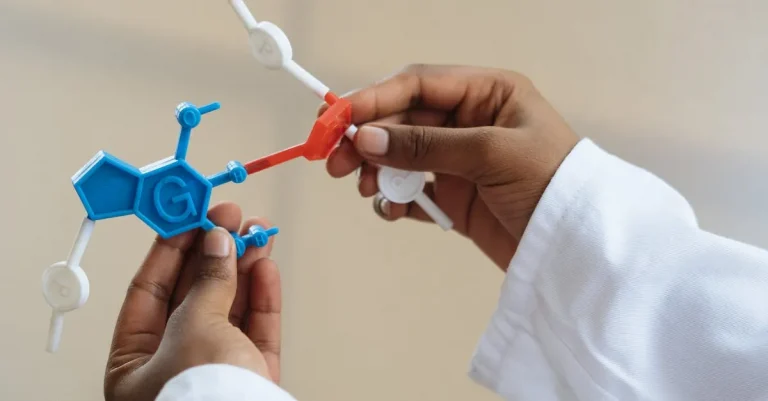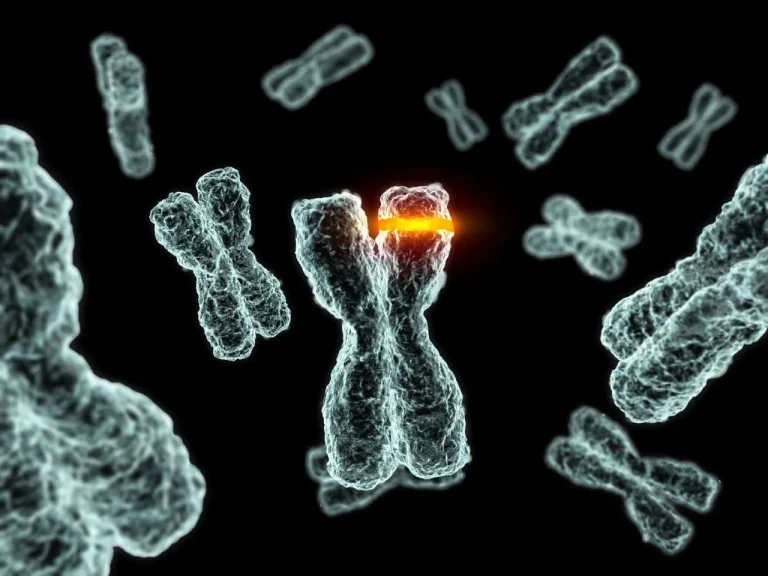What Is A Trial In Science?
From medical breakthroughs to new technologies, science frequently makes headlines for its exciting discoveries. But before any new idea becomes an accepted fact, it must go through rigorous testing called a scientific trial.
Understanding how this process works is key to separating real science from hype.
If you’re short on time, here’s a quick answer: A scientific trial is an experiment done to test a hypothesis by systematically gathering and analyzing data.
In this comprehensive guide, we’ll explore the ins and outs of trials in science. You’ll learn the different types of trials, how they are designed, and why they are essential to the scientific method.
With examples across disciplines like medicine, psychology, and engineering, you’ll gain a clear picture of how trials enable innovations that shape our lives.
Defining Scientific Trials
Scientific trials play a crucial role in the field of science and research. They are carefully designed experiments that aim to investigate the effectiveness, safety, or impact of a specific intervention, treatment, or product.
Trials are essential for gathering evidence and making informed decisions in various scientific fields, including medicine, agriculture, psychology, and environmental science.
Key Elements of a Trial
A scientific trial typically consists of several key elements that ensure its validity and reliability. These elements include:
- Hypothesis: A trial begins with a clear hypothesis or research question that the experiment aims to address. This hypothesis guides the entire trial process.
- Experimental Design: Trials are designed with careful consideration of variables, control groups, sample sizes, and statistical methods to minimize bias and produce reliable results.
- Data Collection: During the trial, researchers collect data through observations, measurements, surveys, or other appropriate methods.
- Data Analysis: The collected data is then analyzed using statistical techniques to determine the significance of the results and draw meaningful conclusions.
- Peer Review: The findings of a trial are often subjected to peer review, where experts in the field evaluate the methodology, results, and conclusions to ensure accuracy and credibility.
Types of Trials – Controlled, Field, Clinical
There are different types of scientific trials, each tailored to the specific research question and context. Some common types of trials include:
- Controlled Trials: These trials involve comparing the effects of a treatment or intervention against a control group that does not receive the treatment. This allows researchers to determine the effectiveness of the intervention.
- Field Trials: Field trials are conducted in real-world settings, such as farms, forests, or natural environments. They aim to assess the impact and feasibility of interventions or practices on a larger scale.
- Clinical Trials: Clinical trials are specifically conducted in the field of medicine to evaluate the safety and efficacy of new drugs, treatments, or medical devices. They involve human participants and adhere to strict ethical guidelines.
Role in the Scientific Method
Scientific trials are an integral part of the scientific method, which is a systematic approach to acquiring knowledge. They help researchers test hypotheses, gather empirical evidence, and refine our understanding of the natural world.
By following a structured and replicable process, trials contribute to the accumulation of reliable and valid scientific knowledge.
It’s important to note that scientific trials are not isolated events, but rather part of an ongoing process of inquiry and discovery. They build upon existing knowledge and often lead to further research and investigations.
The results of trials can have significant implications for public policy, clinical practice, and the advancement of scientific knowledge.
For more information on scientific trials, you can visit the ClinicalTrials.gov website, which provides a comprehensive database of ongoing and completed clinical trials worldwide.
Designing Robust Trials
Forming a Strong Hypothesis
When designing a trial in science, it is crucial to start with a strong hypothesis. A hypothesis is a proposed explanation for a phenomenon that can be tested through experimentation. It serves as the foundation for the entire trial, guiding the researcher in their investigation.
A well-formed hypothesis should be clear, concise, and based on prior knowledge or observations. It should also be falsifiable, meaning that it can be proven false if the results of the trial do not support it.
By formulating a strong hypothesis, researchers can ensure that their trial is focused and purposeful.
Selecting an Appropriate Sample
The selection of an appropriate sample is another important aspect of designing a robust trial. A sample is a subset of the population being studied, and its characteristics should be representative of the larger population.
This ensures that the results obtained from the sample can be generalized to the entire population. To select a sample, researchers may use various sampling techniques such as random sampling, stratified sampling, or convenience sampling, depending on the nature of the study.
By carefully selecting an appropriate sample, researchers can increase the reliability and validity of their trial.
Choosing Controls and Variables
Controls and variables are essential components of any scientific trial. Controls are used to establish a baseline for comparison, while variables are the factors being manipulated or observed. In a well-designed trial, controls are necessary to ensure that any observed effects are not due to external factors.
Variables, on the other hand, allow researchers to test the impact of specific factors on the outcome of the trial. It is important to carefully choose controls and variables that are relevant to the research question and hypothesis.
By doing so, researchers can accurately measure the effects of the variables being studied.
Ensuring Reliability and Validity
Reliability and validity are two key factors in designing a robust trial. Reliability refers to the consistency and repeatability of the results obtained from the trial. To ensure reliability, researchers must use precise measurement techniques, control for confounding factors, and conduct multiple trials.
Validity, on the other hand, relates to the accuracy and truthfulness of the results. To ensure validity, researchers must design their trial in a way that effectively tests the hypothesis and avoids bias.
By addressing reliability and validity concerns, researchers can have confidence in the integrity of their trial and the reliability of their results.
Running Trials and Collecting Data
In the field of science, trials play a crucial role in gathering valuable data and drawing meaningful conclusions. These trials involve carefully planned and executed experiments that aim to test hypotheses and validate scientific claims.
Running trials requires a systematic approach to ensure the accuracy and reliability of the collected data.
Administering Interventions and Tests
During a trial, researchers administer different interventions or tests to subjects or samples. This could involve giving medications, implementing new treatments, or exposing them to certain conditions.
The goal is to observe and measure the effects of these interventions and understand their impact on the subject.
For example, in a clinical trial for a new drug, participants may be randomly assigned to receive either the drug or a placebo. By comparing the outcomes of these two groups, researchers can determine the effectiveness and safety of the drug.
Recording Objective Measurements
To ensure the accuracy of the collected data, objective measurements are recorded during the trial. These measurements are based on quantifiable data that can be observed and measured without bias. Examples of objective measurements include vital signs, laboratory test results, or physical measurements such as height and weight.
For instance, in an agricultural trial testing the efficacy of a new fertilizer, researchers may measure the growth rate of plants, the yield of crops, or the nutrient content in the soil. These objective measurements provide concrete evidence to support or refute the hypothesis being tested.
Tracking Subjective Responses
In addition to objective measurements, trials also involve tracking subjective responses from the subjects. These responses are based on the individual’s personal experiences, perceptions, and opinions.
While subjective data may be more challenging to measure, it provides valuable insights into the human experience and can help researchers understand the broader implications of their findings.
For example, in a psychological trial studying the effectiveness of a therapy technique, participants may be asked to rate their level of anxiety or happiness before and after the therapy sessions. These subjective responses provide a deeper understanding of the psychological impact of the intervention.
Collecting and analyzing data from trials is essential for advancing scientific knowledge and making informed decisions. It allows researchers to draw reliable conclusions and develop evidence-based practices.
By following rigorous protocols and recording both objective and subjective data, trials ensure the integrity and validity of scientific research.
Analyzing and Interpreting Trial Results
Once a trial in science has been conducted, it is crucial to analyze and interpret the results in order to draw meaningful conclusions. This process involves using various statistical analysis methods, identifying trends and patterns, and ultimately drawing evidence-based conclusions.
Statistical Analysis Methods
Statistical analysis plays a vital role in understanding trial results. It helps scientists determine the significance of their findings and whether they are statistically significant or simply due to chance.
There are several statistical analysis methods that can be employed, such as hypothesis testing, regression analysis, and analysis of variance (ANOVA). These methods allow scientists to quantify and examine the relationship between variables, identify patterns, and make predictions based on the data collected.
Identifying Trends and Patterns
Identifying trends and patterns in trial results is essential for understanding the underlying mechanisms or factors at play. By analyzing the data collected, scientists can look for correlations or associations between variables, observe any consistent patterns or trends over time, and identify any outliers or anomalies that may require further investigation.
This process allows researchers to gain a deeper understanding of the phenomenon being studied and provides insight into potential causal relationships.
Drawing Evidence-Based Conclusions
After analyzing the trial results and identifying trends and patterns, scientists can draw evidence-based conclusions. These conclusions are based on the data collected, the statistical analysis performed, and the observed patterns and trends.
It is important to note that drawing conclusions in science is an iterative process, and often involves multiple trials and experiments to validate and strengthen the initial findings. The conclusions drawn should be supported by the evidence and should be able to withstand scrutiny and replication by other researchers.
By analyzing and interpreting trial results using statistical analysis methods, identifying trends and patterns, and drawing evidence-based conclusions, scientists can make significant contributions to the field of science.
This process allows for the advancement of knowledge and the development of new theories and concepts that can further our understanding of the world around us.
Applying Trial Findings through Replication
Independent Verification of Results
One of the key reasons why trials are conducted in science is to ensure the independent verification of results. This means that other researchers can replicate the experiment or study to see if they obtain similar results.
Replication is essential in scientific research as it helps to validate the initial findings and establish the reliability of the conclusions. By independently verifying the results, scientists can have more confidence in the accuracy and validity of their findings.
Building on Previous Knowledge
Replicating trials also allows scientists to build on previous knowledge and expand the understanding of a particular phenomenon. When multiple researchers successfully replicate a study, it strengthens the evidence base and provides a solid foundation for further exploration.
This iterative process of building on previous knowledge helps to advance scientific understanding and opens up new avenues for research. It also allows scientists to identify any inconsistencies or limitations in previous studies, leading to more robust and comprehensive findings.
Contributing to Theories and Applications
Replication of trials plays a crucial role in contributing to the development of theories and applications in various scientific fields. When multiple studies consistently replicate the same findings, it increases the confidence in the underlying theory.
This, in turn, allows researchers to apply the knowledge gained from these trials to practical applications. For instance, in the field of medicine, replicated trials provide the evidence needed to support the effectiveness of a particular treatment or intervention, leading to better patient outcomes.
Replication also helps to identify any potential biases or errors in previous studies, ensuring that theories and applications are based on reliable and accurate information.
Conclusion
From double-blind studies to focus groups, scientific trials employ diverse techniques to systematically test hypotheses. While no single trial can establish absolute truth, the knowledge gained through rigorous testing enables innovation.
With sustained evidence from high-quality trials, new ideas gradually become accepted facts that shape our world. By better understanding the trial process, we can be informed consumers of science, separating credible breakthroughs from untested claims.







